#handicrafts exhibition
Explore tagged Tumblr posts
Text
Eco-Friendly Products Fair in 2024
In a world that is increasingly becoming aware of the environmental challenges it faces, the need for sustainable practices has never been more crucial.

The year 2024 brings forth an inspiring event that echoes the spirit of eco-consciousness – the Eco-Friendly Handicraft Products Fair.

This fair is not just a congregation of artisans and craftsmen but a testament to the growing global movement towards sustainable living and responsible consumption. In this comprehensive exploration, we delve into the significance of such events, the impact they have on local economies, and how they contribute to a more sustainable and environmentally conscious future.
The Rise of Eco-Friendly Handicrafts
Handicrafts have been an integral part of human history, reflecting diverse cultures and traditions. However, as the world grapples with environmental issues, there is a growing shift towards eco-friendly alternatives in every aspect of life, including handicrafts. The use of sustainable materials, ethical production processes, and environmentally friendly packaging are becoming key considerations for both artisans and consumers.
This shift is not merely a trend but a paradigm shift in the way we approach craftsmanship and consumption. The Eco-Friendly Handicraft Products Fair of 2024 serves as a platform to showcase and celebrate the innovation and creativity of artisans who are committed to crafting products that leave a minimal ecological footprint.
The Impact of Eco-Friendly Handicrafts on Local Economies
One of the remarkable aspects of the Eco-Friendly Handicraft Products Fair is its positive impact on local economies. By promoting traditional craftsmanship that utilizes sustainable materials, the fair empowers local artisans, creating economic opportunities within communities. This not only preserves cultural heritage but also fosters a sense of pride and identity among craftsmen.
Moreover, the fair provides a unique avenue for small-scale artisans to access larger markets. Through networking and exposure gained at such events, these artisans can establish connections with retailers and consumers who are increasingly seeking sustainable products. This, in turn, contributes to the economic development of the regions where these artisans reside.
The fair acts as a catalyst for sustainable entrepreneurship, encouraging artisans to adopt eco-friendly practices not only for ethical reasons but also for economic viability. As consumers become more conscientious about their purchasing decisions, there is a growing demand for products that align with environmental values. The Eco-Friendly Handicraft Products Fair becomes a bridge connecting conscious consumers with artisans who share their commitment to sustainability.
Innovations in Eco-Friendly Handicrafts
The fair is not just a showcase; it is a breeding ground for innovation. Artisans from around the world come together to exchange ideas, techniques, and experiences in creating eco-friendly handicrafts. This cross-pollination of ideas leads to the emergence of new and innovative products that marry traditional craftsmanship with modern sustainability practices.
For example, artisans may experiment with upcycling – transforming discarded materials into high-quality handicrafts. This not only reduces waste but also adds a unique narrative to the products. Similarly, the use of renewable materials such as bamboo, organic cotton, and recycled metals is explored, highlighting the versatility and potential of sustainable resources.
In addition to materials, the fair also explores sustainable production processes. Artisans may adopt low-impact techniques, such as natural dyeing methods, energy-efficient manufacturing, and water conservation practices. These innovations not only reduce the environmental footprint of the products but also contribute to the overall sustainability of the handicraft industry.
Educational Initiatives and Workshops
A key aspect of the Eco-Friendly Handicraft Products Fair is its commitment to education and awareness. Workshops, seminars, and interactive sessions are organized to inform both artisans and consumers about the importance of eco-friendly practices. These initiatives aim to bridge the gap in understanding and provide practical insights into incorporating sustainability into the handicraft industry.
Artisans benefit from these workshops by gaining knowledge about the latest sustainable practices, certifications, and market trends. This empowers them to make informed decisions about their craft, ensuring that they remain competitive in an evolving market that values sustainability.
On the consumer side, educational initiatives raise awareness about the environmental impact of consumer choices. Understanding the journey of a product – from raw materials to finished handicraft – allows consumers to make more conscious decisions. By fostering a sense of responsibility, the fair contributes to the larger goal of creating a consumer base that values quality over quantity and sustainability over convenience.
Promoting Cultural Diversity
While the focus of the fair is on eco-friendly practices, it also serves as a celebration of cultural diversity. Traditional handicrafts are deeply rooted in the cultural heritage of communities around the world. The fair provides a stage for artisans to showcase their unique cultural expressions through their crafts.
From intricate handwoven textiles to delicately carved wooden artifacts, the fair is a kaleidoscope of cultural richness. This celebration not only preserves traditional art forms but also fosters cross-cultural appreciation. Visitors to the fair are exposed to a plethora of artistic traditions, creating a global tapestry of creativity that transcends borders.
Furthermore, the fair encourages collaborations between artisans from different cultural backgrounds. These collaborations often result in the fusion of diverse artistic styles, leading to the creation of hybrid handicrafts that carry the essence of multiple cultures. This cross-pollination not only produces aesthetically rich products but also fosters understanding and harmony among communities.
Addressing Environmental Challenges
In addition to showcasing eco-friendly products, the fair takes a proactive stance in addressing environmental challenges. Panel discussions, forums, and keynote addresses by experts in environmental sustainability provide a platform for dialogue and knowledge exchange.
Topics such as climate change, deforestation, and pollution are discussed in the context of the handicraft industry. This holistic approach aims to create awareness about the broader environmental issues that impact both artisans and consumers. By fostering a sense of responsibility, the fair encourages participants to consider the long-term environmental consequences of their choices and actions.
Moreover, the fair explores ways in which the handicraft industry can actively contribute to environmental conservation. This may involve initiatives such as tree planting campaigns, waste reduction programs, or collaborations with environmental organizations. By aligning the industry with environmental stewardship, the fair sets a precedent for other sectors to follow suit.
Networking Opportunities for Artisans
One of the invaluable aspects of the Eco-Friendly Handicraft Products Fair is the networking opportunities it provides for artisans. Traditionally, many artisans, especially those from remote or economically disadvantaged regions, face challenges in reaching wider markets. The fair serves as a bridge, connecting these artisans with retailers, distributors, and even fellow craftsmen.
The networking opportunities extend beyond the duration of the fair. Artisans often establish long-lasting connections that result in ongoing collaborations and partnerships. This not only benefits individual artisans but also contributes to the overall growth and sustainability of the handicraft industry.
Collaborations may take various forms, from joint ventures in production to co-hosting workshops and exhibitions. Such partnerships not only enhance the visibility of artisans but also facilitate the exchange of skills and knowledge. This collaborative spirit is a powerful driver for positive change within the handicraft community.
Consumer Empowerment and Conscious Choices
The fair is not just a marketplace; it is an arena for empowering consumers to make conscious choices. As consumers become increasingly aware of the environmental impact of their purchases, they seek products that align with their values. The fair provides a curated selection of eco-friendly handicrafts, allowing consumers to make informed decisions about the products they bring into their homes.
Through interactions with artisans and educational initiatives, consumers gain insights into the craftsmanship and the story behind each product. This transparency creates a sense of connection between the consumer and the artisan, fostering a deeper appreciation for the value of handmade, eco-friendly products.
Moreover, the fair encourages consumers to adopt a more mindful approach to consumption. By emphasizing the quality, durability, and timeless appeal of handicrafts, the fair challenges the prevailing culture of disposable and mass-produced goods. This shift towards conscious consumption not only benefits the environment but also contributes to the well-being of artisans who produce goods with care and dedication.
Conclusion
The Eco-Friendly Handicraft Products Fair of 2024 stands as a beacon of hope and inspiration in a world grappling with environmental challenges. It goes beyond being a mere exhibition; it is a movement that champions sustainability, celebrates cultural diversity, and empowers both artisans and consumers. The fair not only provides a platform for the showcase of eco-friendly handicrafts but also fosters a community of like-minded individuals committed to making a positive impact on the planet.
As the world continues to navigate the complex landscape of environmental issues, initiatives like the Eco-Friendly Handicraft Products Fair play a pivotal role in shaping a more sustainable and conscious future. Through collaboration, innovation, and education, this fair contributes to the ongoing global effort to create a world where craftsmanship and environmental stewardship coexist harmoniously.
#home textiles#handicrafts accessories#indian furnishings#indian trade fair#gifts show#ihgf delhi fair#handicrafts#fashion accessories#handicraft fair#crafts#handicrafts exporters#handicrafts exhibition#indian handicrafts exporters#exhibition#export#cane bamboo & eco friendly products#ecofriendly#sustainability#environmental#environment#materials#environmentalism#ecology#ecosystem#home furniture#handmade#home decor#handicraft
0 notes
Text



🪡🧵Romanian women have been coding signs for ages. Their threads bind apotropaic symbols into scrolls of fabrics and garments, according to complex systems, which have been developing since the Neolithic ages. In this pocket size comics collection I tried to gather bits of the pixel's long forgotten story. The rough English version of the 36 page publication is available here >>> https://issuu.com/sorivazelina/docs/mostrar2_eng
To flip through the Romanian version please visit the exhibition, at the Peasant Museum in Bucharest, open till the 9th of January 2025. It was built as a reflection on a unique anonymous textile piece, discovered in the archive of the ASTRA Museum in Sibiu. The hyper-sensorial works, leading up to this marvel of over 200 embroidered motifs, belong to artists such as Aurelie Morillas, Marlene Herberth, Marin Raica, Sillyconductor, Anamaria Lungu, Atelier Vrac, all brought together by the Dala Foundation and Ovidiu Daneș, who has been saving the local architectural, intangible and natural heritage, together with his wife Luminița, for more than a decade, also via the CUCA festival.
#comicstrip#comic art#comics#folklore#crafts#romanian#traditional art#romania#embroidery#yves saint laurent#la blouse roumaine#ie#port popular#Lena Constante#Florica Zaharia#Muzeul Țăranului Roman#Romanian Peasant Museum#motifs#textiles#tapestry#patterns#handicraft#publication#zine#folk art#arta populara#pixel#tesaturi#scoarte#public exhibition
41 notes
·
View notes
Video
Ausstellung München, Das bayerische Handwerk, 1927. by Halloween HJB
#Ausstellung München#Munich Exhibition#Das bayerische Handwerk#Bavarian Handicrafts#hands#vintage typography#German language#flickr
1 note
·
View note
Text
Ghatsila School Hosts Innovative Handicraft Exhibition
Students Showcase Creative Models at Social Science Event Key Points: • Baldev Das Sant Lal Saraswati Shishu Vidya Mandir holds handicraft exhibition • 35 different models displayed by students at the Social Science event • Prof. Indal Paswan inaugurates, praises high-quality student creations JAMSHEDPUR – A Ghatsila school recently organized a unique Social Science Exhibition, highlighting…
#शिक्षा#Baldev Das Sant Lal Saraswati Shishu Vidya Mandir#education#Ghatsila#Ghatsila College#Handicrafts#Prof. Indal Paswan#Social Science Exhibition#Student Models
0 notes
Text
10-Day long Handicrafts and Handloom exhibition inaugurated at Pahalgam
ANANTNAG (Raouf Dar) — The Directorate of Handicrafts and Handloom Department of Jammu and Kashmir Union Territory on Tuesday inaugurated 10-Day long exhibition cum sale in Anantnag district of South Kashmir. The exhibition was inaugurated by Mr. Mahmood Ahmad Shah, the Director of Handicrafts and Handloom Department, Kashmir at the famous tourist destination Pahalgam. Shah also inspects various…

View On WordPress
0 notes
Text
#kashmiri carpet#red carpet#shawls#cavery industries exhibits#handicraft#carpets and rugs#caveryindustriesexhibits#cavery industries#cavery ind#cavery
0 notes
Text
0 notes
Text
Shandur Polo Festival 2023: A Spectacular Celebration of Sports and Culture
The Shandur Polo Festival is an annual event that combines the thrill of polo with the rich cultural heritage of the region. Held in the breathtakingly beautiful Shandur Pass, located between Chitral and Gilgit in Pakistan, the festival attracts thousands of spectators and participants from around the world. This article delves into the history, significance, and highlights of the Shandur Polo…

View On WordPress
#"Roof of the World"#Accommodation options near Shandur Pass#Best time to visit#Camping facilities#Chitral and Gilgit#Competitions at Shandur Polo Festival#Cultural events in Chitral and Gilgit#Cultural expressions#Cultural extravaganza#cultural heritage#Dress code for Shandur Polo Festival#Economic benefits of the festival#Engaging with locals at Shandur Pass#Equestrian skills#Equestrian skills in Pakistan#Exquisite cuisine#Free entry#Friendly rivalry#Handicrafts exhibition at Shandur Polo Festival#Immersive experience#Impact of Shandur Polo Festival#Intense competition#Local cuisine at Shandur Polo Ground#Local handicrafts#Majestic mountains#Medical services#Music performances#Music performances at Shandur Pass#Origins of Polo#Passionate players
0 notes
Photo
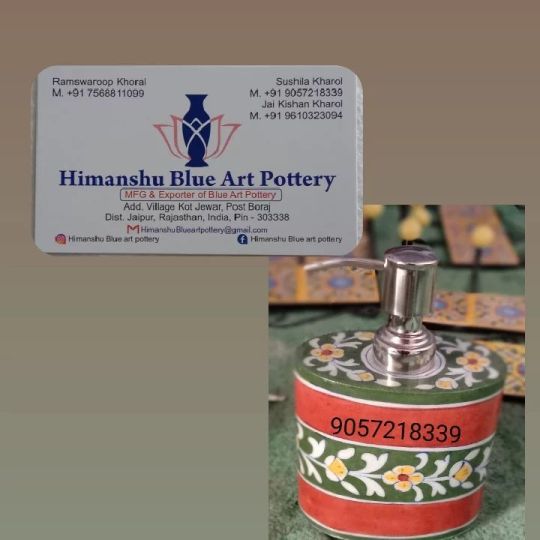
Himanshu blue art pottery Beautiful ❤️🥰 hand made Blue art pottery decorative soap 🧼🧼 dispenser in different disigin and colour use for your Home and bathroom decoration ✨✨ [email protected] https://wa.me/c/919057218339 https://www.facebook.com/profile.php?id=100064706981288 Dm to order 9057218339 #blueart #blueartpottery #art #handmade #decoreation #artcrafts #jaipur #soap #dispanser #handicrafts #crafts #pottery #bathroom #decor #homedecor #india #giftideas #bottle #hastkala #exhibition #bathroomdecor #rajasthan #potterylove #artkala #artwork #art #artisan #handicraftsofindia https://www.instagram.com/p/CqPODTGvTkU/?igshid=NGJjMDIxMWI=
#blueart#blueartpottery#art#handmade#decoreation#artcrafts#jaipur#soap#dispanser#handicrafts#crafts#pottery#bathroom#decor#homedecor#india#giftideas#bottle#hastkala#exhibition#bathroomdecor#rajasthan#potterylove#artkala#artwork#artisan#handicraftsofindia
0 notes
Text

Ukrainian embroidery is a type of Ukrainian folk decorative art; an ornamental or thematic image on fabric or leather made with various hand or machine stitches; one of the most common types of handicrafts by Ukrainian women, and girls in particular.

Ukrainian folk embroidery. State publishing house "Mystetstvo", Kharkiv, 1936. Presents embroidery from Podillia and Kyiv region, which was selected from the materials of the first exhibition of Ukrainian folk art in Kyiv. The album consists of 20 pages of illustrations.
#ukrainian art#Ukrainian folk embroidery#Library Kobzar#Kobzar Art#books#antique books#books & libraries
265 notes
·
View notes
Text
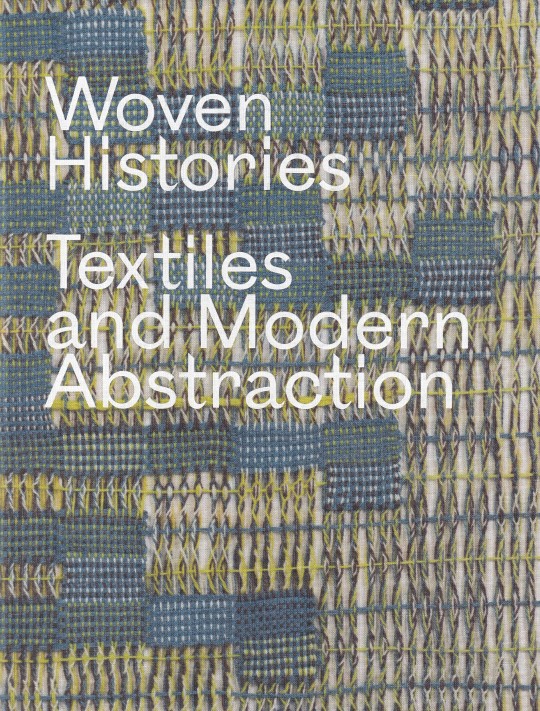
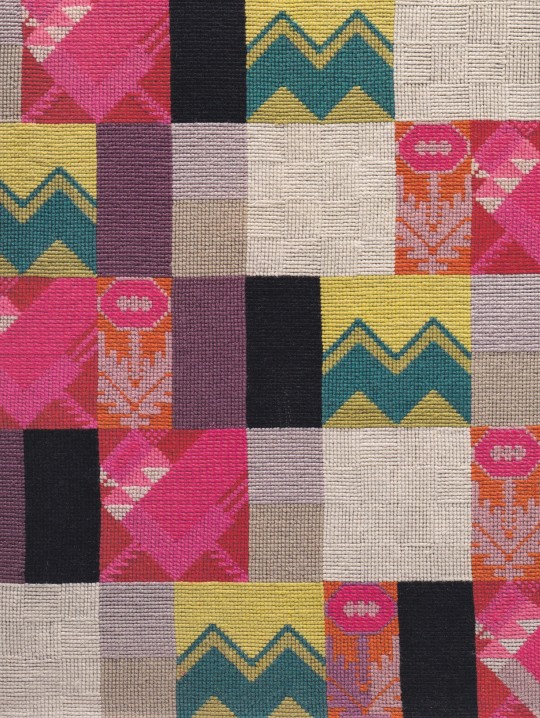
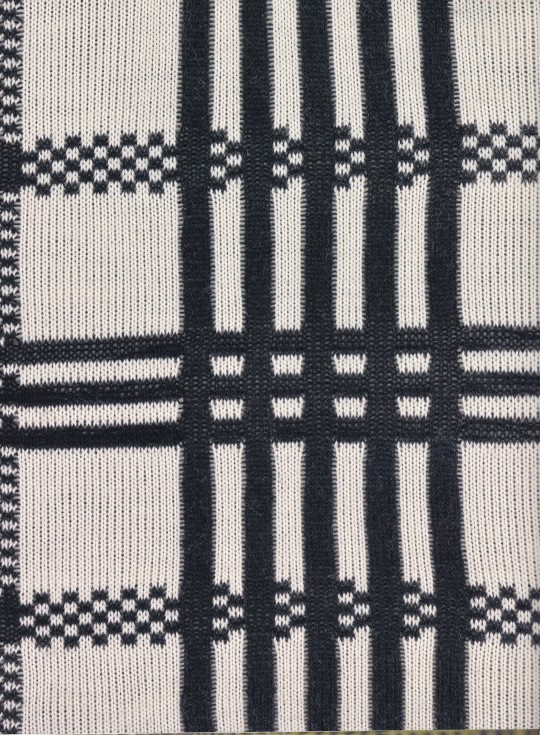


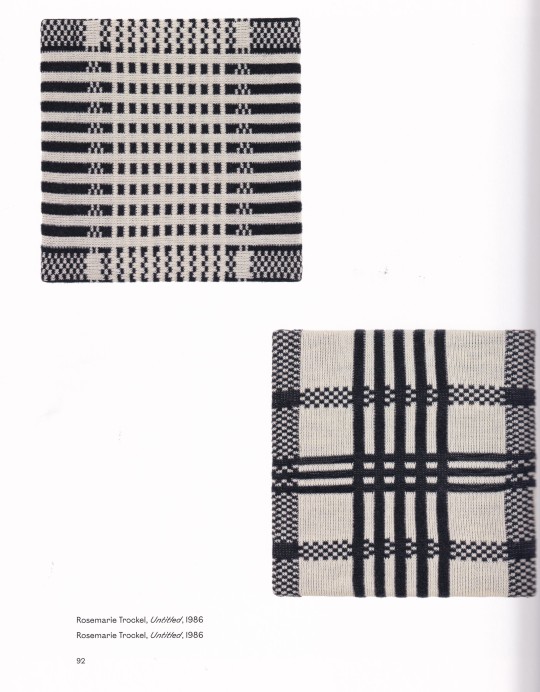
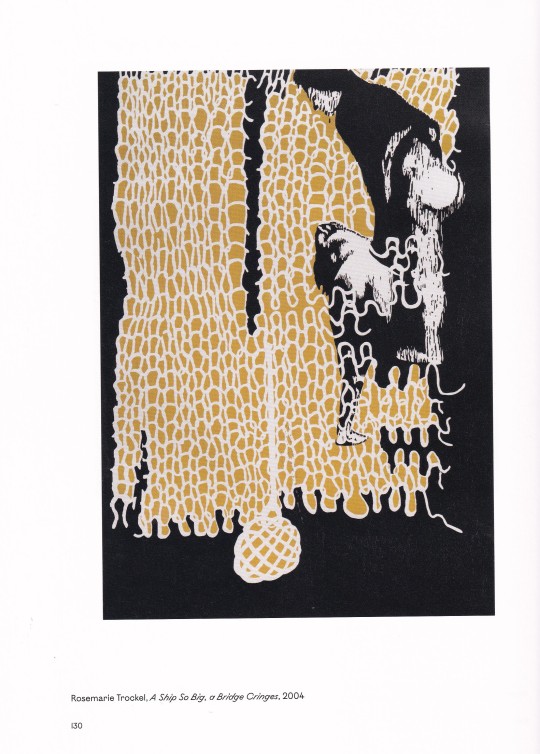





Woven Histories
Textiles and Modern Abstraction
Production by Brad Ireland and Christina Wiginton, Editing by Magda Nakassis,
National Gallery of Art, Washington copublished by The University of Chicago Press, 2023, 284 pages, ISBN 978-0-226-82729-2
euro 65,00
email if you want to buy [email protected]
Exhibition dates : Los Angeles County Museum Art 2023, Washington Nat.Gall.Art 2024, Ottawa Nat.Gall.Canada 2024,New York MoMA 2025
Richly illustrated volume exploring the inseparable histories of modernist abstraction and twentieth-century textiles. Published on the occasion of an exhibition curated by Lynne Cooke, Woven Histories offers a fresh and authoritative look at textiles—particularly weaving—as a major force in the evolution of abstraction. This richly illustrated volume features more than fifty creators whose work crosses divisions and hierarchies formerly segregating the fine arts from the applied arts and handicrafts. Woven Histories begins in the early twentieth century, rooting the abstract art of Sophie Taeuber-Arp in the applied arts and handicrafts, then features the interdisciplinary practices of Anni Albers, Sonia Delaunay, Liubov Popova, Varvara Stepanova, and others who sought to effect social change through fabrics for furnishings and apparel. Over the century, the intersection of textiles and abstraction engaged artists from Ed Rossbach, Kay Sekimachi, Ruth Asawa, Lenore Tawney, and Sheila Hicks to Rosemarie Trockel, Ellen Lesperance, Jeffrey Gibson, Igshaan Adams, and Liz Collins, whose textile-based works continue to shape this discourse. Including essays by distinguished art historians as well as reflections from contemporary artists, this ambitious project traces the intertwined histories of textiles and abstraction as vehicles through which artists probe urgent issues of our time.
24/12/23
#Woven Histories#textiles#modern abstraction#Anni Albers#Sonia Delaunay#Popova#Stepanova#Lenore Tawney#Sheila Hicks#textiles books#fashion books#fashionbooksmilano
304 notes
·
View notes
Text
Part 10 of "Letters from Watson" of The Sign of the Four starts with Sherlock Holmes enthusiastically infodumping.
He appeared to be in a state of nervous exaltation. I have never known him so brilliant. He spoke on a quick succession of subjects,—on miracle-plays, on medieval pottery, on Stradivarius violins, on the Buddhism of Ceylon, and on the war-ships of the future,—handling each as though he had made a special study of it. His bright humor marked the reaction from his black depression of the preceding days.
I wondered "why these topics in particular?"
Miracle plays were, in 1890, the subject of a new book by Alfred W. Pollard of the British Museum. It received a positive review in The Spectator.
The Arts & Crafts Exhibition Society had its first exhibition in London in 1888. While handicrafting, the William Morris aesthetic, and such, had been around for a while by then, this was the big organized push for public attention. Not only did the Arts & Crafts movement draw on medieval influences, but many a UK pottery maker was on the site of a medieval kiln and interested in medieval techniques.
Stradivarius violins are, of course, the sought-after antique violin. There were at least two donated to the Musée de la Musique in Paris shortly before the time of this story, as well as a number getting heard by important violinists in important orchestras. Even more interestingly from Holmes' point of view, a factory in Germany had just started making Stradivarius copies.
Buddhism in Sri Lanka had lapsed into torpor in the early 19th century but was, by 1890, well into a resurgence. The kick-off, back in 1866, had been Buddhist monk Mohottivatte Gunananda challenging Christian missionaries to a debate. In 1890, he had just died; but he had founded a political movement.
As for war-ships, in 1889, the Naval Defense Act had passed. It called for the UK Navy to be maintained at least twice as large as the combined navies of the next two largest powers (then France and Russia). War ships -- both quantity and design -- had doubtless been in the news for a while.
These aren't obscure hyperfixations (though I'm all for obscure hyperfixations!). These are conversational topics appropriate for a well-read gentleman of the era: the sort who gets three or four newspapers, reads the book reviews, and then reads the books reviewed. This explains how Dr. Watson and Athelney Jones set him off, or even participated in the conversation.
We also, while on a boat, get the return of Winwood Reade's Martyrdom of Man (making it Chekhov's book reference?). Says Holmes of Reade:
“He remarks that, while the individual man is an insoluble puzzle, in the aggregate he becomes a mathematical certainty. You can, for example, never foretell what any one man will do, but you can say with precision what an average number will be up to. Individuals vary, but percentages remain constant. So says the statistician."
Statistics was not new -- scholarly sorts had become engaged with statistics during the Enlightenment -- but it was in the early stages of being systematized into the mathematical field we know today. Holmes sounds like he would have been a fan of Francis Ysidro Edgeworth's Metre-like: Or the Method of Measuring Probability and Utility, published in 1887, since it attempted to use probability as the basis of inductive reasoning.
Then we have a boat chase.
I love the boat chase. I feel like the boat chase might have contributed to inspiration for the train chase in Nicholas Meyers' The Seven Percent Solution, though I also feel that a train chase needs no justification other than "we have two trains and a problem."
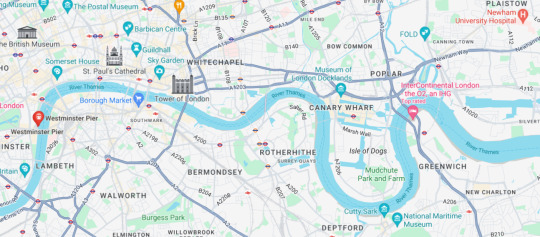
Our heroes leave from Westminster Wharf, which I'm assuming is roughly today's Westminster Pier, which had not yet received its statue of Boudica. (Westminster is conveniently southeast of Marylebone, where Baker Street is located.) So that long gentle curve is the river past St. Paul's and the Tower of London and under multiple bridges. They pick up the Aurora about where the river heads into that first shallow down-curve and chase it up and down, around the Isle of Dogs, up past Greenwich, and around the down curve at Blackwall. So they must catch it as the river starts to straighten and widen.
A pleasure tour from Westminster Pier to Greenwich today takes about an hour, but those are the boats their launch was passing like they were standing still. The Eva, a Thames Steam Launch of the appropriate era, was one of the speediest of the time and could achieve 16.5 miles/hour.
Then... I really would have preferred an actual monkey. We've now had in this chapter so many reminders of the achievements of European, particularly English, civilization that the avalanche of adjectives framing the Andaman Islander as primitive stands out as a deliberate counterpoint, despite the inclusion of Ceylon and Winwood Reade. Will we ever know what the Andaman Islander Accomplice's motivations were? (If yes, will I wish even more fervently that we'd just stuck with a monkey?)
I love the boat chase, though.
31 notes
·
View notes
Text
Things are bleak when even the insatiable businesses, industrialists, and colonial governors of the British Empire say that wealth and profit should be secondary goals compared to the most important mission and guiding principle of provoking "pain, dread, and terror".
---
[There was] development of a penal order or prison disciplinary system in nineteenth-century colonial India designed to extract the labour of convicts [...]. Colonial authorities, particularly in Bengal, the largest presidency of India, which then included the present-day states of West Bengal, Assam, [...] and the nation-state of Bangladesh, increasingly deployed prisoners in intramural [indoor] instead of extramural [outdoor] work. [...] The shift to handicrafts production resulted from the efforts of the colonial state to increase the severity of the conditions of incarceration as per the recommendations of the influential Prison-Discipline Committee of the late 1830s that found the existing penal disciplinary system wanting [...]. According to this Committee, whose report became the primer for penal and judicial reform in the nineteenth century, the employment of prisoners in public works, especially road construction, was definitely ‘the worst method of treatment … ever … provided under the British Government for this class of persons'. [...] In its estimation, [...] such outdoor work [...] had the additional [...] [quality] of developing ‘frightful’ rates of mortality.
Particularly in Bengal, the initial experiments [...] gave way to [...] employment of prisoners indoors in handicrafts production [...]. No one championed that practice more enthusiastically than F. J. Mouat, a medical officer who became the inspector-general of prisons in Bengal in 1855 and convened the first ever province-wide exhibition in Calcutta in 1856 to celebrate and stimulate jail handicrafts in the region. [...] That began to change, however, as administrators at different levels of government raised concerns about the lack of severity of indoor penal regimens [...]. An 1877 conference convened to improve jail discipline concluded that colonial authorities needed to reconsider the merits of public works [favored as a more severe punishment, 'the worst method of treatment ever'] [...]. In the early 1880s Calcutta followed up with a directive urging local officials [...] to employ more inmates in public works [outdoors]. [...] Indeed, colonial debates about mobilizing convict labour to work indoors or outdoors were always centred on concerns about ensuring and maximizing the severity of imprisonment and not the rehabilitation of prisoners. [...]
---
At the turn of the nineteenth century [early 1800s], prisoners in Bengal, as in the other presidencies of Bombay and Madras, worked [outdoors on "public works"] [...]. Even at this early juncture, authorities at the highest level of the colonial and imperial government [...] worried that their disciplinary practices were not tasked with chores requiring greater exertion [...]. Consequently, London and Calcutta encouraged local officials to employ prisoners in [...] roads in particular [because the conditions were more brutal] [...]. They also broached the possibility of moving convicts away from their home districts so that they would not have access to friends and family. [...] And with local officials eager to capitalise on prison labour, judicial authorities helped increase convict numbers [...] in the first decade of the nineteenth century that authorized courts to tack on hard labour (and banishment) for particular offences. [...]
[T]he Prison-Discipline Committee [made the] proposal to make imprisonment 'a terror to evil-doers' by compelling inmates to engage in 'dull, wearisome, monotonous tasks' [...].
---
[But] Mouat’s plan was to transform jails into ‘schools of industry’ [...]. [He wanted to make jails profitable, de facto businesses. To do this, he advocated indoor handicrafts production.] [H]e singled out certain jails for their productivity, Alipore [...] in particular [...] producing 'an actual profit of £74,232 [...]'. He boasted that this record was unmatched 'in any country or in any prison of the whole world'. [...] Not everyone shared Mouat’s faith in ‘industrial training’ as a punishment [...].
But the 1864 Committee [...], [m]uch more so than the Bengal inspector-general [Mouat] ever did, [in] its report emphasized making imprisonment 'a matter of dread, apprehension, and avoidance'.
Everything was to be secondary to that guiding principle, including making penal labour profitable [...].
---
As the lieutenant-governor put it, the prevailing system focused overly on manufactures and sanitary conditions and not enough on the ‘penal effect of imprisonment’. Therefore, it needed revamping to make the punishment of short-term prisoners more ‘stinging’, labour more penal, [...] so that Bengal jails would not be ‘a complete liberty hall’. [...]. For colonial officials, the [initial] interest in establishing [...] [indoor] hand labour in prisons was prompted primarily by their concern with [...] lessening the high costs of incarceration which resulted from the added expenses of employing extra guards to watch over inmates labouring outdoors. [But the government was willing to pay more, and to lose a source of profit, for the sake of making the punishment more severe.] [...] To his [Mouat's] detractors, intramural work in handicrafts production did not add up to hard labour -- it was not rigorous enough, [...] and therefore diminished the severity of imprisonment as a punishment, particularly in comparison to the demands of labouring outdoors on the roads or operating the treadwheels that some authorities wished to introduce to indoor labour.
His opponents also questioned his emphasis on profitability, which they believed distracted prison officials from ensuring that incarceration entailed pain and deprivation.
---
Text above by: Anand A. Yang. "The prison-handicraft complex: Convict labour in colonial India". Modern Asian Studies, Volume 57, Issue 3, May 2023, pages 808-834. Published online: 27 February 2023. At DOI: 10.1017/S0026749X22000324 [Bold emphasis and some paragraph breaks/contractions added by me. Italicized first heading/sentence in this post added by me. Text within brackets added by me for clarity. Presented here for commentary, teaching, criticism purposes.]
#it is usually said that imperial violence is kinda impersonal in the sense that its a means to an end to achieve wealth#in this case they see the cruelty itself as valuable#abolition#ecology#imperial#colonial#carceral#intimacies of four continents#tidalectics#victorian and edwardian popular culture#carceral geography
56 notes
·
View notes
Text
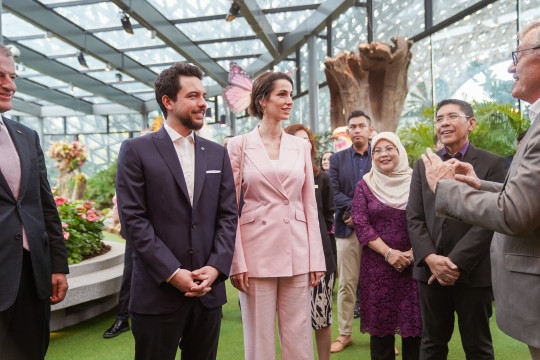



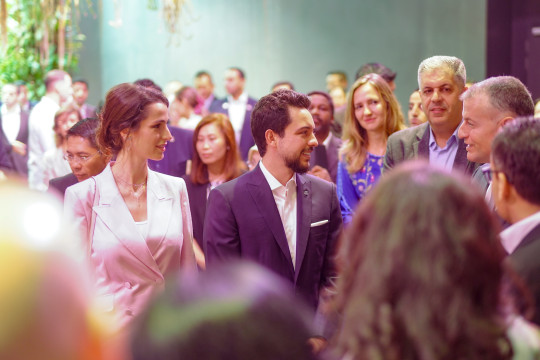





12 January 2024: Crown Prince Hussein, accompanied by Princess Rajwa, attended the launch of a Jordanian exhibition at Gardens by the Bay in Singapore.
They toured the exhibition, which contributes to promoting tourism in Jordan and enhancing tourism exchange between Jordan and Singapore, and Crown Prince Hussein took part in planting the first Jordanian olive tree in the gardens.
The exhibition offers visitors the opportunity to view models of Jordanian archaeological sites, photo exhibitions of these sites, and examine mosaic pieces from the Church of St. Stephen in Umm Ar Rasas.
In addition, the exhibits include wild herbs that grow in Jordan, Dead Sea products, and a wide selection of handicrafts weaved by the Bani Hamida Women Weaving Project and the Jordan River Foundation, which represent part of Jordan’s cultural heritage. (Source: Petra)
Planting trees, flowers, and unique plants in Singapore’s gardens carries a symbolic meaning of strengthening its relations with the rest of the world, by enriching its natural environment.
Jordan’s embassy in Singapore is organising the month-long exhibition, in partnership with the Jordan Tourism Board (JTB) and the Royal Botanic Garden, in cooperation with Gardens by the Bay.
Gardens by the Bay is one of the largest gardens in Singapore, as it receives nearly 14 million visitors annually. It showcases environmental technologies and a unique selection of plants from various climates, as well as seasonal flowers.
Two memoranda of understanding were signed on the sidelines of the exhibition’s opening, one between the JTB and the National Association of Travel Agents Singapore, and another between the Royal Botanic Garden and Gardens by the Bay.
Jordan’s Ambassador to Singapore Samer Naber attended the exhibition’s launch.
26 notes
·
View notes
Text
Pre-Durga Puja Fair Showcases Handicrafts in Jamshedpur
Two-day event at Telco Sabuj Kalyan Sangh supports women entrepreneurs and charity Jamshedpur women’s group Samriddhi organizes handicraft exhibition to aid poor children and elderly. JAMSHEDPUR – A two-day Pre-Durga Puja fair and handicraft exhibition, organized by women’s group Samriddhi, is being held at Telco Sabuj Kalyan Sangh on August 17th and 18th. The event aims to support poor children…
#आयोजन#charity event Jamshedpur#Event#handmade jewelry exhibition#Jamshedpur Community Event#local artisan showcase#Pre-Durga Puja fair Jamshedpur#Pre-Durga Puja shopping#Samriddhi handicraft fair#Telco Sabuj Kalyan Sangh exhibition#women empowerment initiative#women entrepreneurs Jamshedpur
0 notes
Text
20 Unforgettable Experiences in Rwanda: Your Ultimate 2025 Guide

Rwanda, the Land of a Thousand Hills, has transformed into one of Africa's most captivating destinations. From misty mountains harboring endangered gorillas to vibrant cultural experiences, here's your definitive guide to the best experiences in Rwanda for 2025.
1. Trek with Mountain Gorillas in Volcanoes National Park
Nothing compares to meeting these gentle giants in their natural habitat. The Volcanoes National Park offers the world's most intimate gorilla trekking experience. Book your permits well in advance – this life-changing adventure remains Rwanda's crown jewel of tourism.
2. Experience the Modern Charm of Kigali
Rwanda's capital is Africa's cleanest city and a model for sustainable urban development. Start at the Kigali Genocide Memorial to understand Rwanda's history, then explore the vibrant street art scene and growing café culture in the Kimihurura and Nyamirambo neighborhoods.
3. Canopy Walk in Nyungwe Forest National Park
Suspend yourself 60 meters above the forest floor on East Africa's highest canopy walkway. This ancient rainforest hosts 13 primate species and over 300 bird species, making it a paradise for nature enthusiasts.
4. Lake Kivu Sunset Cruise
Experience the serene beauty of one of Africa's Great Lakes. The new luxury boats offering sunset cruises from Rubavu (Gisenyi) provide a perfect blend of relaxation and adventure.
5. Visit the Royal Palace Museum in Nyanza
Step back in time at this beautifully preserved traditional palace. The museum's new interactive exhibits for 2025 showcase Rwanda's rich monarchical history.
6. Mountain Biking on the Congo Nile Trail
Adventure seekers can't miss this 227km trail connecting Lake Kivu's stunning coastline. The newly maintained routes for 2025 offer both challenging rides and easier segments for beginners.
7. Explore Akagera National Park
Rwanda's only savannah park is now home to the Big Five. The 2025 night safari programs offer unique opportunities to spot nocturnal wildlife.
8. Traditional Craft Shopping at Caplaki Handicrafts
Support local artisans while picking up authentic Rwandan crafts. The market's new section features workshops where you can learn traditional weaving techniques.
9. Coffee and Tea Experience Tours
Visit Rwanda's premium coffee cooperatives and tea estates. The new specialty coffee tours in 2025 include cupping sessions with award-winning baristas.
10. Golden Monkey Tracking
These endangered primates in Volcanoes National Park offer a less strenuous but equally magical alternative to gorilla trekking.
11. Kigali Cultural Village
Immerse yourself in Rwandan culture at this new cultural hub, featuring traditional dance performances, craft demonstrations, and cooking classes.
12. Hiking Mount Bisoke
Challenge yourself with a day hike to this volcanic peak, offering stunning views of both Rwanda and the Democratic Republic of Congo.
13. Bird Watching in Gishwati-Mukura National Park
Recently restored, this forest park is now a prime destination for spotting rare bird species. The new canopy platforms installed for 2025 offer unprecedented viewing opportunities.
14. Visit the Campaign Against Genocide Museum
Located within Rwanda's Parliament, this museum provides crucial insights into the country's remarkable journey of reconciliation.
15. Karenge Bush Camp Experience
Stay in Akagera's exclusive mobile bush camp for an authentic safari experience. The 2025 season introduces new stargazing programs with local astronomers.
16. Rwanda Cricket Stadium
Watch a match at one of Africa's most scenic cricket grounds, surrounded by rolling hills. The 2025 season features international tournaments.
17. Gastronomy Tour in Kigali
Explore Rwanda's evolving culinary scene, from traditional dishes to innovative fusion restaurants. Don't miss the new food markets in Gasabo district.
18. Wellness Retreat at Lake Muhazi
Experience traditional and modern wellness practices at the new eco-lodges along Lake Muhazi's shores.
19. Community Tourism in Musanze
Participate in local community projects and traditional activities. The new cultural exchange programs for 2025 offer deeper insights into rural Rwandan life.
20. Contemporary Art Galleries in Kigali
Discover Rwanda's thriving art scene at galleries like Inema Arts Center and NIYO Arts Gallery, showcasing the country's creative renaissance.
Plan Your Visit
Rwanda's commitment to sustainable tourism and safety makes it an ideal destination for 2025. With new direct flights from major cities and simplified visa processes, visiting Rwanda has never been easier. The country's high-end tourism infrastructure, combined with its natural beauty and rich culture, offers an unforgettable African experience.
Remember to book through authorized tour operators like Kadoo Travel and Tours to ensure the best experience and support sustainable tourism practices in Rwanda.
#VisitRwanda #RwandaTourism #RemarkeableRwanda #TravelRwanda #GorillaTrekking #AfricanSafari #KigaliCity #ExploreAfrica #KadooTravels
2 notes
·
View notes
